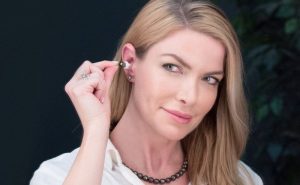It is challenging to jump into a market predominantly dominated by six fiercely competitive companies. This was the case for Eargo. For decades, the hearing aid industry has been dominated by Sonova, William Demant, Starkey Hearing Technologies, GNStore Nord, Widex, and Sivantos (recently acquired Widex). But Eargo had something different in mind. The startup created a brand new hearing aid platform for consumers—one modeled after Warby Parker eyewear, which cuts out the middlemen to lower the costs of eye glasses for customers.
Christian Gormsen, a former executive with GN Store Nord, saw many hearing aid startups go up, then down. So what was different about Eargo? The only convincing he needed was to see its prototype created by co-founders Florent Michel, Daniel Shen, and Raphael Michel. Gormsen soon joined the company’s board in 2014 and moved into his current role as CEO in 2016.
Eargo has made the entire process easier—and more affordable. To date, the company has sold its devices to more than 20,000 people since launching in 2017.
Today, hearing loss is one of the most prevalent and debilitating conditions, globally, and in most cases, can be left untreated for extended periods of time. In the U.S. alone, nearly 38 million people over the age of 18 need a hearing aid, according to the The Food & Drug Administration. Worldwide, the World Health Organization estimates that 466 million need to use a device, a number that is expected to nearly double to 900 million by 2050.
Overall, age is a great indicator of hearing loss, according to the National Institute of Deafness and Other Communication Disorders, with the greatest amount of hearing loss in the 60 to 69 age group. Nearly 25 percent of adults in America aged 65 to 74, and 50 percent of those who are 75 and older, have disabling hearing loss.
Hearing loss can also have other health ramifications and has been linked to Alzheimer’s, depression, and other cognitive decline. Those with untreated hearing loss are twice as likely to become depressed than those who use a device or are being treated, according to a Healthy Hearing study.
Unfortunately, due to cost (the average cost of a hearing aid is $2,300, according to the President’s Council of Advisors on Science and Technology), medical insurance, and sometimes the embarrassment of wearing an aid, people can wait up to 15 years from the initial start of hearing loss before seeking treatment.























